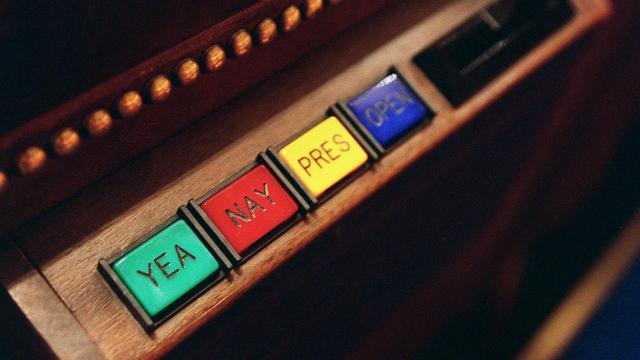Voting in the US House has not changed much since an electronic voting system was first used on 23 January 1973, with the goal of making voting periods shorter.
The latest version of the EVS system was installed in 2004. There are 47 voting stations around the House chamber, according to a 2012 document on House practices, and members can use any of them to vote using a card they carry. The member inserts the card into the machine and pushes the button with the voting position she wants to record: “Yea,” “Nay” or “Present.”
Few votes are held in the format that existed decades ago, when individual names were read aloud, but electronic voting isn’t mandatory. Lawmakers can come down to the well of the chamber, in front of the clerks, and use a system of colour-coded cards to write their votes and hand them to a tally clerk. In the final minutes of a vote lawmakers have the opportunity to change their votes if necessary, though to do this they’re sometimes required to vote using the well-card system instead of the EVS machines.
Once the time period allotted to a vote has expired and the voting is closed, the results and individual positions cannot be changed. In the House, it’s customary for Representatives to file “Personal Explanations” explaining missed votes, or votes they entered incorrectly. These don’t permit lawmakers to actually change a vote or record one after the fact. They are statements of intent that lawmakers can point to and say, “Here’s how I would have voted.”
Voting attendance has improved over the years: a 1991 Los Angeles Times story reported that 33 US representatives had missed more than 10 per cent of votes that year. The number of current lawmakers meeting that threshold is down to 21 this year (the House has 435 members, but by tradition the Speaker of the House rarely votes). At the same time, the number of explanations inserted into the Congressional Record also has gone up, from 441 during 1991 — 1992 to 1353 in 2009 — 2010. It has since dropped off: the number of explanations filed in the last congress (2013 — 2014) was 740, the lowest in 20 years.
This article first appeared on ProbPublica and is republished here under Creative Commons licence.
Image by Scott J. Ferrell/Getty
